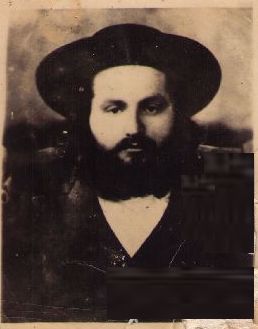|
Satmar (Hasidic Dynasty)
Satmar (Yiddish: סאַטמאַר, Hebrew: סאטמר) is a Hasidic group founded in 1905 by Grand Rebbe Joel Teitelbaum, in the city of Szatmárnémeti, Hungary (now Satu Mare in Romania). The group is an offshoot of the Sighet Hasidic dynasty. Following World War II, it was re-established in New York. Satmar is the largest Hasidic dynasty in the world, with some 26,000 households. It is characterized by extreme conservatism, complete rejection of modern culture, and fierce anti-Zionism. Satmar sponsors a comprehensive education and media system in Yiddish, and its members use Yiddish as a primary language. The sect also sponsors and leads the Central Rabbinical Congress, which serves as an umbrella organization for other very conservative, anti-Zionist, and mostly Hungarian-descended ultra-Orthodox communities. After Joel Teitelbaum's death in 1979, he was succeeded by his nephew, Moshe Teitelbaum. Since the latter's death in 2006, the dynasty is split between his two sons, ... [...More Info...] [...Related Items...] OR: [Wikipedia] [Google] [Baidu] |
Chaim Tzvi Teitelbaum
Rabbi Chaim Tzvi Teitelbaum (December 28, 1879 – January 21, 1926) (''6 shevat 5686'' on the Hebrew calendar), the Sigheter Rebbe, author of ''Atzei Chaim'', was the oldest son of Rabbi Chananya Yom Tov Lipa Teitelbaum, the ''Kedushas Yom Tov''. He was the elder brother of Rabbi Joel Teitelbaum, and the father of Moshe Teitelbaum, both rebbes of Satmar. Biography Chaim Tzvi Teitelbaum married Bracha Sima Halberstam, a sister of '' Rebbitzen'' Chaya Freidel Halberstam, who was the wife of Rabbi Ben Zion Halberstam, the second Bobover Rebbe. Together, they had four children. One was Rabbi Moshe Teitelbaum, the late Satmar Rebbe. Another was Rabbi Yekutiel Yehuda Teitelbaum, who succeeded him as Sigheter Rebbe until he was murdered in the Holocaust. One daughter married Rabbi Yekusiel Yehudah Halberstam, the Sanz-Klausenburg'er Rebbe, but she also was murdered in the Holocaust. Their youngest daughter, Chana, married Rabbi Yechiel Yehuda Isaacson, who was known as the Rav o ... [...More Info...] [...Related Items...] OR: [Wikipedia] [Google] [Baidu] |
Mandatory Palestine
Mandatory Palestine ( ar, فلسطين الانتدابية '; he, פָּלֶשְׂתִּינָה (א״י) ', where "E.Y." indicates ''’Eretz Yiśrā’ēl'', the Land of Israel) was a geopolitical entity established between 1920 and 1948 in the region of Palestine under the terms of the League of Nations Mandate for Palestine. During the First World War (1914–1918), an Arab uprising against Ottoman rule and the British Empire's Egyptian Expeditionary Force under General Edmund Allenby drove the Ottoman Turks out of the Levant during the Sinai and Palestine Campaign. The United Kingdom had agreed in the McMahon–Hussein Correspondence that it would honour Arab independence if the Arabs revolted against the Ottoman Turks, but the two sides had different interpretations of this agreement, and in the end, the United Kingdom and France divided the area under the Sykes–Picot Agreementan act of betrayal in the eyes of the Arabs. Further complicating the issue was t ... [...More Info...] [...Related Items...] OR: [Wikipedia] [Google] [Baidu] |
Kastner Train
The Kastner train consisted of 35 cattle wagons that left Budapest on 30 June 1944, during the German occupation of Hungary, carrying over 1,600 Jews temporarily to Bergen-Belsen and safety in Switzerland after large ransom paid by Swiss Orthodox Jew Yitzchak Sternbuch, Recha Sternbuch's husband.For 30 June, see Bauer (1994), p. 199; for the date and time (30 June, towards 11 pm), see Löb (2009), pp. 50, 97; for 35 cattle trucks, see p. 97. Porter (2007), p. 234, writes that the train left Budapest at half an hour after midnight on Saturday, 1 July. The number of passengers most often cited is 1,684. This was the number registered when the train arrived at the Bergen-Belsen concentration camp. The number on board when the train left Budapest is not known, because people jumped on and off while the train was in motion. The train was named after Rudolf Kastner (aka Kasztner), a Hungarian-Jewish lawyer and journalist, who was a founding member of the Budapest A ... [...More Info...] [...Related Items...] OR: [Wikipedia] [Google] [Baidu] |
World Agudath Israel
World Agudath Israel ( he, אגודת ישראל), usually known as the Aguda, was established in the early twentieth century as the political arm of Ashkenazi Torah Judaism. It succeeded ''Agudas Shlumei Emunei Yisroel'' (Union of Faithful Jewry) in 1912. Its base of support was located in Eastern Europe before the Second World War but, due to the revival of the Hasidic movement, it included Orthodox Jews throughout Europe. Prior to World War II and the Holocaust, Agudath Israel operated a number of Jewish educational institutions throughout Europe. After the war, it has continued to operate such institutions in the United States as Agudath Israel of America, and in Israel. Agudath Israel is guided by its Moetzes Gedolei HaTorah (Council of Sages) in Israel and the USA. History Katowice Conference World Agudath Israel was established by Jewish religious leaders at a conference held at Kattowitz (Katowice) in 1912. They were concerned that the Tenth Zionist Congress had d ... [...More Info...] [...Related Items...] OR: [Wikipedia] [Google] [Baidu] |
Zionism
Zionism ( he, צִיּוֹנוּת ''Tsiyyonut'' after '' Zion'') is a nationalist movement that espouses the establishment of, and support for a homeland for the Jewish people centered in the area roughly corresponding to what is known in Jewish tradition as the Land of Israel, which corresponds in other terms to the region of Palestine, Canaan, or the Holy Land, on the basis of a long Jewish connection and attachment to that land. Modern Zionism emerged in the late 19th century in Central and Eastern Europe as a national revival movement, both in reaction to newer waves of antisemitism and as a response to Haskalah, or Jewish Enlightenment. Soon after this, most leaders of the movement associated the main goal with creating the desired homeland in Palestine, then an area controlled by the Ottoman Empire. From 1897 to 1948, the primary goal of the Zionist Movement was to establish the basis for a Jewish homeland in Palestine, and thereafter to consolidate it. In a unique v ... [...More Info...] [...Related Items...] OR: [Wikipedia] [Google] [Baidu] |
Haredi Judaism
Haredi Judaism ( he, ', ; also spelled ''Charedi'' in English; plural ''Haredim'' or ''Charedim'') consists of groups within Orthodox Judaism that are characterized by their strict adherence to ''halakha'' (Jewish law) and traditions, in opposition to modern values and practices. Its members are usually referred to as ultra-Orthodox in English; however, the term "ultra-Orthodox" is considered pejorative by many of its adherents, who prefer terms like strictly Orthodox or Haredi. Haredi Jews regard themselves as the most religiously authentic group of Jews, although other movements of Judaism disagree. Some scholars have suggested that Haredi Judaism is a reaction to societal changes, including political emancipation, the ''Haskalah'' movement derived from the Enlightenment, acculturation, secularization, religious reform in all its forms from mild to extreme, the rise of the Jewish national movements, etc. In contrast to Modern Orthodox Judaism, followers of Haredi Judaism ... [...More Info...] [...Related Items...] OR: [Wikipedia] [Google] [Baidu] |
Yekusiel Yehuda Teitelbaum (II)
Yekusiel Yehuda (Zalmen Leib) Teitelbaum (1911 – 18 May 1944) was Chief Rabbi of Sighet/Máramarossziget from 1936–1940 (Romania), 1940–1944 (Hungary). Biography Teitelbaum was the eldest son of Rabbi Chaim Tzvi Teitelbaum (''Atzei Chaim'' – d. 1926) and a brother of Rabbi Moshe Teitelbaum. He was born in Máramarossziget, Hungary in 1911. At the age of 14 he was a successor to a long chain of Uhel-Sziget Rebbe's. In his first marriage, he married Ruchel, daughter of his uncle Rabbi Joel Teitelbaum. Ruchel died after 18 months of marriage and Teitelbaum remarried Gitel Yehudis, the daughter of his other uncle Rabbi Zusha Halberstam son of Rabbi Shalom Eliezer Halberstam of Újfehértó (Ratzfert). The Holocaust In May 1944, he was sent along with the first of four transports of the Jewish Community in Máramarossziget to the Auschwitz concentration camp where he was murdered in the early morning hours of May 18 in the gas chambers, together with his wife and his two ... [...More Info...] [...Related Items...] OR: [Wikipedia] [Google] [Baidu] |
Carei
Carei (; , ; /, yi, , ) is a city in Satu Mare County, northwestern Romania, near the border with Hungary. The city administers one village, Ianculești ( hu, Szentjánosmajor). History The first mention of the city under the name of "Karul" dates from 1320, and as "Károly" in 1325, however, the city is known to have existed since 1264, as it was the domain of the Kaplony clan and the center of the Károlyi family's personal domain that settled in the region shortly after the arrival of the Hungarians. The name of the city comes from the word "karul" (in modern Hungarian "karvaly"). The etymology of the word can be traced back to the ancient Turkish language, the word meaning sparrow. Another theory is that the city was named after the Károlyi family. King Louis I of Hungary permitted the organization of weekly market gatherings on Saturdays in Carei in 1346, as a result of the military achievements of the Károlyi family. The development of regional trade in the region s ... [...More Info...] [...Related Items...] OR: [Wikipedia] [Google] [Baidu] |
Unterlander Jews
Unterlander Jews ( yi, אונטערלאנד, translit. ''Unterland'', "Lowland"; he, גליל תחתון, translit. ''Galil Takhton'', "Lower Province"; hu, Alföldi Zsidók) were the Jews who resided in the northeastern regions of the historical Kingdom of Hungary, or present-day eastern Slovakia, Zakarpattia Oblast in Ukraine, and northwestern Transylvania, in Romania.Yeshayahu A. Jelinek, Paul R. Magocsi. ''The Carpathian Diaspora: The Jews of Subcarpathian Rus' and Mukachevo, 1848–1948''. East European Monographs (2007). p. 5-6. Like their kindred Oberlander Jews, the term is uniquely Jewish one, and is not related to "Lower Hungary".Menahem Keren-Kratz. ''Cultural Life in Maramaros County (Hungary, Romania, Czechoslovakia): Literature, Press and Jewish Thought, 1874–1944''. Ph.D dissertation submitted to the Senate of Bar-Ilan University, 2008. OCLC 352874902. pp. 23-24. Unterland, or "Lowland", was named so by the Oberlander, in spite of being topographically higher: Acco ... [...More Info...] [...Related Items...] OR: [Wikipedia] [Google] [Baidu] |
Orthodox Judaism
Orthodox Judaism is the collective term for the traditionalist and theologically conservative branches of contemporary Judaism. Theologically, it is chiefly defined by regarding the Torah, both Written and Oral, as revealed by God to Moses on Mount Sinai and faithfully transmitted ever since. Orthodox Judaism, therefore, advocates a strict observance of Jewish law, or ''halakha'', which is to be interpreted and determined exclusively according to traditional methods and in adherence to the continuum of received precedent through the ages. It regards the entire ''halakhic'' system as ultimately grounded in immutable revelation, and beyond external influence. Key practices are observing the Sabbath, eating kosher, and Torah study. Key doctrines include a future Messiah who will restore Jewish practice by building the temple in Jerusalem and gathering all the Jews to Israel, belief in a future bodily resurrection of the dead, divine reward and punishment for the righte ... [...More Info...] [...Related Items...] OR: [Wikipedia] [Google] [Baidu] |
Treaty Of Trianon
The Treaty of Trianon (french: Traité de Trianon, hu, Trianoni békeszerződés, it, Trattato del Trianon) was prepared at the Paris Peace Conference and was signed in the Grand Trianon château in Versailles on 4 June 1920. It formally ended World War I between most of the Allies of World War I and the Kingdom of Hungary. French diplomats played the major role in designing the treaty, with a view to establishing a French-led coalition of the newly formed states. It regulated the status of the Kingdom of Hungary and defined its borders generally within the ceasefire lines established in November–December 1918 and left Hungary as a landlocked state that included , 28% of the that had constituted the pre-war Kingdom of Hungary (the Hungarian half of the Austro-Hungarian monarchy). The truncated kingdom had a population of 7.6 million, 36% compared to the pre-war kingdom's population of 20.9 million. Though the areas that were allocated to neighbouring countries had ... [...More Info...] [...Related Items...] OR: [Wikipedia] [Google] [Baidu] |







